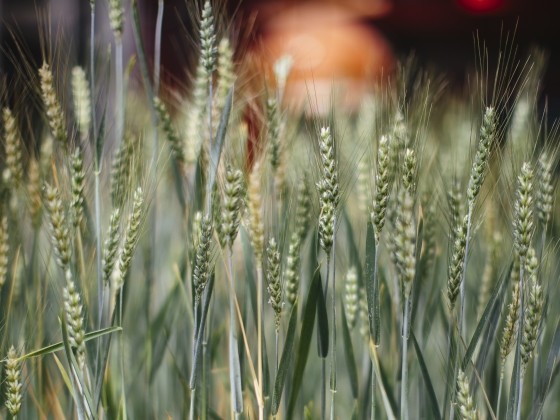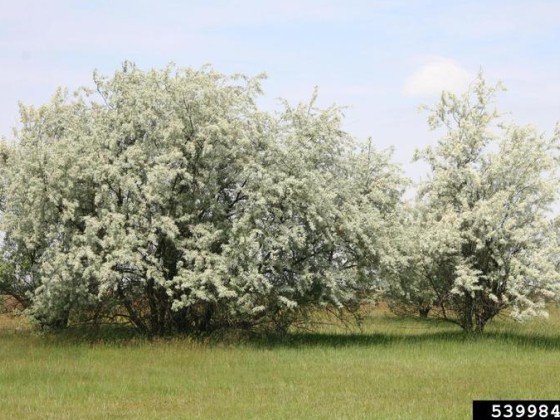Agriculture
Introduction
Text-to-speech Audio
We are passing fields of winter wheat, spring wheat and barley. The difference between winter and spring wheat is the time of year when it is planted. Spring wheat is sown in April and harvested in August, while winter wheat is sown in October and harvested in July. Winter wheat needs a period of cold temperatures to create grain heads, whereas spring wheat does not.
Images
Winter Wheat

Russian Olive

Backstory and Context
Text-to-speech Audio
Many wheat fields in this area are planted in long narrow strips called "strip-cropping.” Alternating north-south strips are either planted or left fallow for two reasons: First, the region is so dry that it takes two years to accumulate enough moisture to grow a crop, and second, the pattern helps control wind-caused soil erosion. The fields run north to south because the wind blows from the west – this orientation reduces erosion. Many hedgerows that you see today are the Russian Olive bush, not related to olives but a tree from the interior portion of Russia. The Russian Olive looks like a brambly bush. Note: Aside from Russian Olive, the other bush used as a windbreak is called Caragana. Caragana is very green and thus very distinguishable from the smoky color of Russian Olive. Caragana is also called Siberian Pea Bush. It originated in Siberia and Manchuria. It tolerates alkaline soils and very cold weather. It is suggested that Caragana is less evasive than Russian Olive, and that a lot of it is being pulled out and we see more Caragana than Russian Olive.
